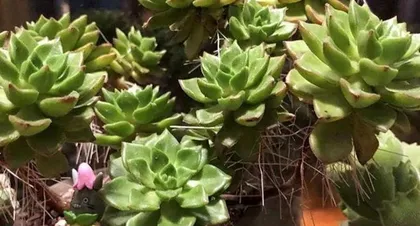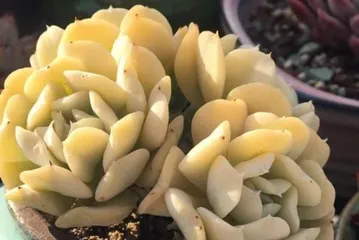Succulents have become a very popular type of indoor potted plant in recent years, but they have relatively high requirements for their environment and water quality. To maintain the growth and health of succulents, we need to choose suitable soil, nutrient solution, and water source for them. This article will introduce the usage methods and precautions for Carbendazim solution to help enthusiasts of growing succulents take better care of them.

What is Carbendazim solution?
Carbendazim solution is a chemical that can inhibit the reproduction of microorganisms such as molds and fungi, also known as antibacterial water. It usually appears in the form of a water solution with a concentration of about 1%, and can be used to grow plants in hydroponic or soil-based cultivation.
What is the function of Carbendazim solution?
Using Carbendazim solution can prevent and treat problems such as rot, pests, and diseases in succulents, reducing the mortality rate caused by the reproduction of molds and fungi. At the same time, Carbendazim solution also helps to promote plant growth.

What is the dosage of Carbendazim solution?
The concentration and dosage of Carbendazim solution need to be determined according to the specific situation. Generally, you can add about 0.5ml of Carbendazim solution per liter of water. If it is used to treat already infected plants, the dosage can be increased to about 1ml per liter of water.
What are the precautions for using Carbendazim solution?
1. Carbendazim solution is a chemical, so protective equipment such as gloves and a mask should be worn when using it.
2. When using Carbendazim solution, avoid contact with areas such as the eyes and mouth.

3. Before using Carbendazim solution, the plant should be cleaned first to remove as much surface dirt, pests, and diseases as possible.
4. When using Carbendazim solution, it should be evenly sprayed on the plant surface or poured into the soil.
5. Avoid overusing Carbendazim solution, otherwise it may cause harm to the plant.
6. After using Carbendazim solution, maintain a well-ventilated and well-lit environment for the plant, and avoid overwatering.
What issues should be noted when using Carbendazim solution?
When using Carbendazim solution, the following points need to be noted:
1. The storage period of Carbendazim solution is generally about 3 years, and it cannot be used after the expiration date.
2. When watering with Carbendazim solution, note that the watering tools must be clean and disinfected to avoid cross-contamination.
3. If the plant still has problems such as poor growth, pests, or diseases after using Carbendazim solution, the soil should be changed or the nutrient solution adjusted in a timely manner.
Can Carbendazim solution be mixed with other nutrient solutions?
Yes. Carbendazim solution can be mixed with other nutrient solutions without causing side effects. However, pay attention to controlling the dosage and concentration, and do not overuse it.
Can Carbendazim solution replace soil?
No. Carbendazim solution is only an auxiliary treatment drug and cannot replace soil. Plants also need a stable root system to absorb nutrients, release carbon dioxide, etc.
Can Carbendazim solution kill beneficial microorganisms?
It might. In addition to inhibiting harmful microorganisms, Carbendazim solution may also cause harm to some beneficial microorganisms. When using Carbendazim solution, try to avoid excessive damage to the soil and root system.
What diseases can Carbendazim solution treat?
Carbendazim solution can prevent and treat some common pests and diseases, such as gray mold, aphids, powdery mildew, etc. However, for some more serious diseases, such as root rot, termites, etc., specialized drugs need to be used for treatment.
Will using Carbendazim solution affect plant growth?
No. Carbendazim solution can promote plant growth while keeping the plant healthy. However, pay attention to the dosage and concentration to avoid damage from overuse.
Can Carbendazim solution be used for all succulents?
No. Different succulents have different requirements for environment and water quality. Before using Carbendazim solution, it is necessary to understand the plant's variety, habits, and needs. For some plants with high humidity requirements, such as some orchids, it is not advisable to use Carbendazim solution.
How long does the effect of Carbendazim solution last?
The duration of the effect of Carbendazim solution varies depending on the plant's habits and needs. Generally, you can spray Carbendazim solution about once a month to keep the plant healthy.
What are the substitutes for Carbendazim solution?
Substitutes for Carbendazim solution mainly include vinegar, chlorophyll, soda water, etc., but their antibacterial effects may not be as significant as Carbendazim solution.
What are the contraindications for using Carbendazim solution?
1. Children, pregnant women, and other groups should not be exposed to Carbendazim solution.
2. People with hypertension, heart disease, and other conditions should not use Carbendazim solution.
3. People who are allergic to Carbendazim solution or have a history of allergies should not use it.
4. In food cultivation, drinking water, and other aspects, relevant laws and standards must be strictly followed, and Carbendazim solution should not be used indiscriminately.
Using Carbendazim solution can help us better care for succulents, prevent and treat problems such as pests and diseases. However, when using Carbendazim solution, it is necessary to pay attention to the concentration and dosage to avoid damage from overuse. At the same time, we must also understand the effects, contraindications, and precautions for using Carbendazim solution to maintain the healthy growth of plants.